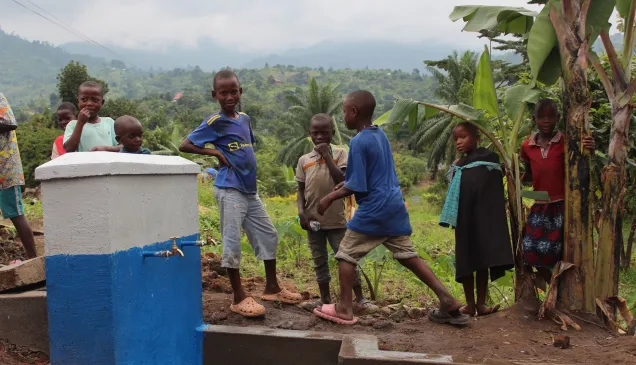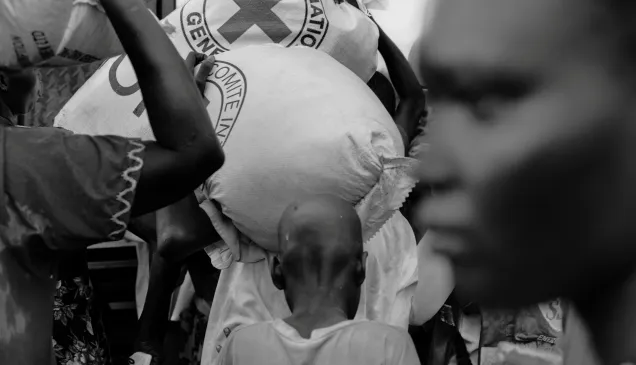The ICRC would like to briefly take stock of some of what has been achieved since the creation of the mandate and to point to major shortcomings in our collective response for the internally displaced.
We would like to begin by thanking the Special Rapporteur on the Human Rights of Internally Displaced Persons, Dr Chaloka Beyani, for his recent report to the Human Rights Council, in which he highlights the progress made on normative issues, including with respect to the Kampala Convention and the increased use of the Guiding Principles in national legislation and policies. The ICRC has supported the elaboration of those instruments and their incorporation into national legislation, and will continue to support States in that regard, in accordance with its mandate and sphere of competence.
At the international level, significant progress has been made in improving institutional cooperation and ensuring a more coherent response to the plight of the internally displaced, including through enhanced use of the cluster system. The ICRC remains committed to active cooperation with relevant humanitarian actors, giving priority to those that have operational capacities on the ground and that abide by established humanitarian principles. We also note with satisfaction that the increased focus on IDPs has enhanced the awareness and understanding of their situation and triggered more active involvement by humanitarian and development actors, notably in the area of protracted displacement.
Nonetheless, in spite of the significant progress achieved since the creation of the mandate, a very different perspective reveals that millions of internally displaced persons remain largely out of reach of humanitarian agencies, receiving only minimal, if any, protection and assistance. According to the Internal Displacement Monitoring Centre, the number of people displaced by conflict and violence had reached 33.3 million at the end of 2013, many more than when the mandate was created. This indicates that the international community has neither been able to reduce the number of those who find themselves in the most life-threatening circumstances nor to adequately respond to their plight.
In this regard, two observations can be made. The first is that the global figure for internal displacement is likely to remain high or even increase further unless we are able to provide greatly improved protection for the civilian population in contemporary armed conflicts. This, in turn, requires better compliance with international humanitarian law, including the rules designed to prevent forced displacement. While the primary responsibility in this regard rests with the parties to conflict, it also involves the wider community of States, as can be seen from the obligation to ensure respect for IHL in all circumstances, enshrined in Article 1 common to the four Geneva Conventions. The recent peak in displacement figures points to a collective failure as well as to the urgency of both preventing armed conflicts and better mitigating their humanitarian consequences.
Second, we need to reflect on and improve how we operate in conflict situations and better communicate our shortcomings in that regard. The principle of impartiality dictates that priority be given to the most urgent cases of distress. Yet IDPs who find themselves most at risk are too often considered to be out of reach. In several recent and ongoing crises, the prevailing insecurity or lack of acceptance of humanitarian organizations has prevented most, if not all, from even being able to conduct basic needs assessments among those who find themselves outside camps or in urban settings, let alone from responding in any way commensurate with the prevailing needs.
To better identify existing gaps, we believe it important not to treat IDPs as a single, more or less coherent group but to be more articulate about those we are able to assist and those we fail to reach. While all IDPs are in need of some form of protection and assistance, their conditions vary hugely, and more efforts should be directed towards those who are most at risk. We should put less emphasis on communicating numbers of beneficiaries and more on explaining the very serious obstacles that we encounter, including lack of trust and attempts to block or to direct international assistance in a partial way.
At the same time, it is important to adopt a holistic approach, focusing also on local communities and host populations. It should be borne in mind that conflicts often equate with widespread poverty. Failing to address the needs of local communities increases the risk that they will be forced to leave their homes, thus adding to the number of displaced persons requiring protection and assistance. Furthermore, failing to address the needs of host communities increases the risk of polarizing the situation, exposing IDPs to further threats.
To better reach those in most urgent need, we will need to address several issues. We consider it necessary, for example, to significantly boost the operational capacities of local actors. For the ICRC, this implies first and foremost National Red Cross and Red Crescent Societies, which often enjoy local acceptance, have a significant network of volunteers and have intimate knowledge of local conditions. At the same time, it is important to avoid their being perceived as serving the interests of organizations that for one reason or another are considered to have a political or military agenda and are thus rejected by local authorities or armed groups. It will also be necessary for a number of humanitarian actors to overcome some of the problems associated with insecurity or lack of acceptance. For our part, this involves a sustained and ongoing dialogue with governments and armed groups in order to ascertain whether we can rely on our Fundamental Principles and what it takes to be able to make a difference where it matters most.



